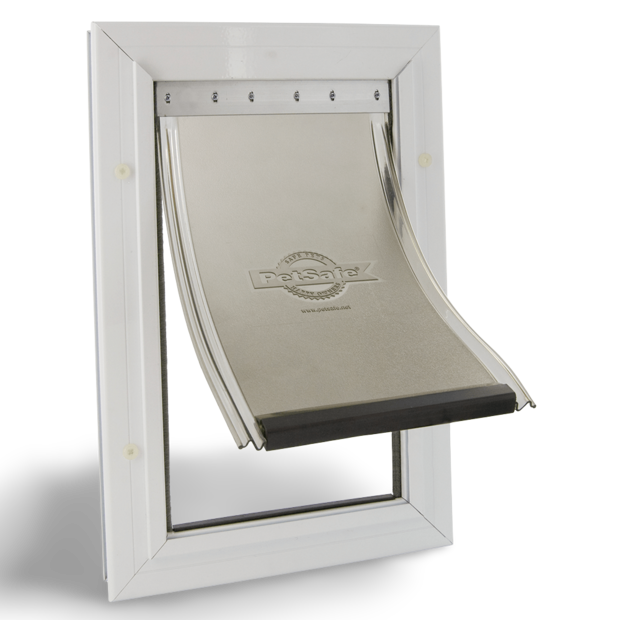Summer Dangers for Pets
How to Keep Your Best Mate Safe In Summer
This article is written by Pet Circle Veterinarian,
While summer is undoubtedly a time for fun and celebration, all pet owners need to be prepared for the potential dangers that Summertime brings for our furry friends. In addition to pesky heat-loving parasites, the harsh Australian sun can pose a very real threat in terms of sunburn and heatstroke. And when it comes to sun protection, most people know how to keep themselves protected (and are ready to slip, slop, and slap!) but may not know how to keep their pet protected.
Heatstroke in pets
Longer days and warmer weather means more opportunities to spend time outdoors with your pet. While this is a fantastic way to bond with them, it's important to be aware that heat stroke is a very real issue for pets in Australia.
Pets that are at a greater risk of heat stroke include long or dark-haired, overweight, and brachycephalic (flat-faced) breeds. However, every pet is at risk of developing heat stroke if they are heavily exercised during extreme heat.
Identifying Heatstroke
Heatstroke may cause some or all of the following symptoms:
- Heavy panting or difficulty breathing
- Vomiting
- Collapse
- Core temperature raised above 40°C
- Increased heart rate
- Bright red or bluish-purple gums from lack of oxygen to the tissues
- Excessive salivation
Treatment of Heatstroke
If your pet is suffering from heatstroke, they should receive veterinary attention. If you find your pet in heat distress, take them out of direct exposure to the heat and place them by a fan.
Use a wet towel or cool water (not chilled) to lower your pet's temperature gradually. Avoid cooling your pet too quickly (e.g by putting them in cold water) as this can cause additional health problems.
Heatstroke is a very serious condition and if your pet's body temperature is elevated for even a short period of time it can cause irreparable damage to their nerves and organs, resulting in death.
Pets who are kept inside cars on warm or hot days are at a very high risk of developing heatstroke; and we strongly recommend never leaving a dog inside a car unattended. For more information, read our guide on What to do if you see a dog locked inside a hot car.
Tips for avoiding heatstroke in your pet
1. Ensure access to shade and shelter.
Your pet will moderate their own temperature if given access to cooler areas, such as shady patches. If your pet is outdoors only, you might like to supply a shade shelter or kennel so they can cool down on hot days. You also might like to consider a pet access door so your pet can go inside for shade, or outside for some fresh air as they please. For indoor-only pets, always make sure the home is well-aerated during the day if left home alone.
2. Hydration, hydration, hydration!
While excessive temperatures certainly do a lot of damage, most heatstroke symptoms are actually related to severe dehydration. It's always important to keep your pet hydrated during summer, and there are plenty of ways to achieve this. You can encourage your pet to drink with a water fountain, as pets are naturally attracted to running water. You can also try freezing a block of ice with some treats or minced meat inside, as a make-your-own 'doggy ice block'.
If you are taking your dog out for some outdoor activity, always think ahead and consider bringing a travel bowl so you can provide water on the go.
3. Walk at dusk or twilight.
To avoid over heating your pooch, only walk them early in the morning or late in the afternoon or evening. This is particularly important for those brachycephalic (flat-faced) breeds who struggle to breathe when exercised in the heat. Read more about this in our article Brachycephalic Airway Syndrome. Remember: dogs regulate their temperature by panting. If a dog can't breathe properly, they also can't cool down).
Why not look at some night walking products, to get you motivated for some moonlight strolls?
4. Splish, splash!
Sometimes, it's just too hot to walk your dog. But that doesn't mean they have to miss out on their daily exercise. Why not take them swimming?
Swimming is an excellent low-impact form of exercise for dogs (just as it is for us!) and particularly good for dogs with arthritis or weight issues. If you don't have a pool or dog beach nearby, why not try a portable dog pool? You can even kit them out in a doggy life jacket if you aren't sure how sound their fitness is!
5. Ice, ice, baby.
There are plenty of products that can help keep your pet cool, particularly if you aren't home with them during the day. Cooling mats can provide a refreshing cool surface for your pet to lounge upon, and chilled bowls can help keep their water source icy fresh. Cooling bandanas are even available, which keep your dog 'cool' in more ways than one!
6. Shed that furry coat.
For cats or dogs with long coats, such as poodles or ragdolls, ensure you get them clipped nice and early in the season to avoid excessive shagginess and overheating. It's also important to keep them brushed and well-groomed to avoid extra mats. After all, no one would make you wear a winter coat during summer, so why should it be any different for your pet?
2 - Sun protection for pets

Pets that are most at risk of sunburn are those with white or light coloured fur due to the decreased pigment levels in their skin. Breeds at a particular risk include bull terriers, border collies, boxers, dalmatians, greyhounds, whippets, and staffies. The most common areas on the body to experience sun damage are their ears, eyelids, nose and belly. Lesions caused by sun exposure can be very uncomfortable, painful and lead to more serious conditions such as cancer.
Avoidance is the best prevention when it comes to sun protection. Keeping your pet indoors or in shaded areas during peak UV radiation times (between 11am-4pm) is best. When your know your pet is going to be exposed, use a pet safe sunscreen and carefully apply to vulnerable areas. In some instances, a UV resistant sunsuit may be the best option for your pet, just make sure you still coat their ears and nose with sunscreen.
And remember!...
Pets most at risk of HEATSTROKE are those with:
- Dark coloured coats
- Pushed in faces
Pets most at risk of UV DAMAGE are those with:
- White or light coloured coats
- Short, thin or patchy fur and exposed skin
3 - Summertime Parasites

Which Parasites Pose a Risk in Summer?
1. Ticks: high risk. Paralysis Ticks are one of the most important Australian parasites due to their abundancy along the heavily populated Eastern coastline, and the deadly paralysis condition they cause. Ticks are at their worst during Spring and Summer due to their breeding season. To check whether ticks are presenting a risk early this year in your area, ask your local vet clinic.
Where are paralysis ticks found in Australia?
The paralysis tick (Ixodes holocyclus) is found along the eastern coastal strip of Australia and is most abundant from August to March. Cases of tick paralysis as far south as Melbourne have been reported in recent years.
This map shows the approximate distribution in Australia (in the red shaded areas).
Source: Toxinology.com

2. Fleas: High risk. Fleas love the warm weather and breed most actively during Spring and Summer. Fleas can be very difficult to see in your pet's fur - in fact, most people will never see them. You may instead spot 'flea dirt' (which is actually flea faeces!) within the fur over your dog's rump or under your cat's chin. Make sure to keep your pet protected all Summer long with a reputable flea preventative like Nexgard, Bravecto, or Revolution Plus. Learn more about fleas and their life cycle.
3. Intestinal worms: Moderate risk. Unfortunately, pesky worms never rest! These 'evergreen' parasites pose a risk all year round, and can lead to debilitating illnesses particularly in young animals. Depending on the species, worms are usually caught in the soil or passed from dog-to-dog via direct contact. Learn more about the worms of concern in Australia.
4. Heartworm: Moderate-high risk. The transmission of heartworm is at its worst in Summer due to its mosquito-borne method of spread, so it's vital to be on top of your pet's heartworm prevention. With such a slow life cycle, pets requires consistent heartworm prevention all year round with no breaks, in order to protect against any immature larvae and keep their bodies heartworm-free! Learn more about heartworm and the best prevention for dogs.
5. Mites: Moderate-low risk. Dust mites tend to flare up in Winter when our windows are closed and homes are stuffy, however some species such as Demodex or ear mites may pose a risk all year round. Learn more about the different species of mites.
For more information on the most significant parasites in Australia, read our Complete Guide to Australian Parasites.
Which Preventatives are Best for Summer?
During Summer, depending on your area, tick prevention should be included in your regular parasite regime. This is especially vital for pet owners living within 100km of the Eastern coast line of Australia (from Melbourne to the tip of North Queensland!).
However, in many parts of Australia (particularly West Australia and South Australia), tick prevention may not be necessary due to its distribution along the Eastern side of the country. Likewise, cats who live 100% indoor are unlikely to require tick prevention. Ultimately, we recommend checking with a vet in your area about whether your pet requires tick prevention during winter. (And if you aren't sure, it's certainly fine to use tick prevention just in case!)
Remember: There's no harm in providing tick prevention all year round, even if you're not in a tick zone. It's better to be safe than sorry, after all!
Our Top Combination Products for Dogs & Cats
Nexgard Spectra is one simple monthly chew, which protects against ticks, fleas, intestinal worms and heartworm.
Bravecto Green is a tasty chew which offers your dog reliable protection against fleas, ticks, and mites.
Revolution Plus is a monthly spot-on treatment for cats that covers ticks, fleas, heartworm, and intestinal worms.
Bravecto Plus for cats protects your kitty against ticks, fleas, intestinal worms, and heartworm, and only needs to be given once every 2 months.
Shop All Summer Parasite Prevention
Want to know more? Read our review of the Best Flea and Tick Treatments for Dogs or the Best Flea and Tick Treatments for Cats.
Further Reading
How To Help Your Dog with Storm Phobia
Christmas Foods that are Toxic To Pets
What is the best treat for your dog?













































